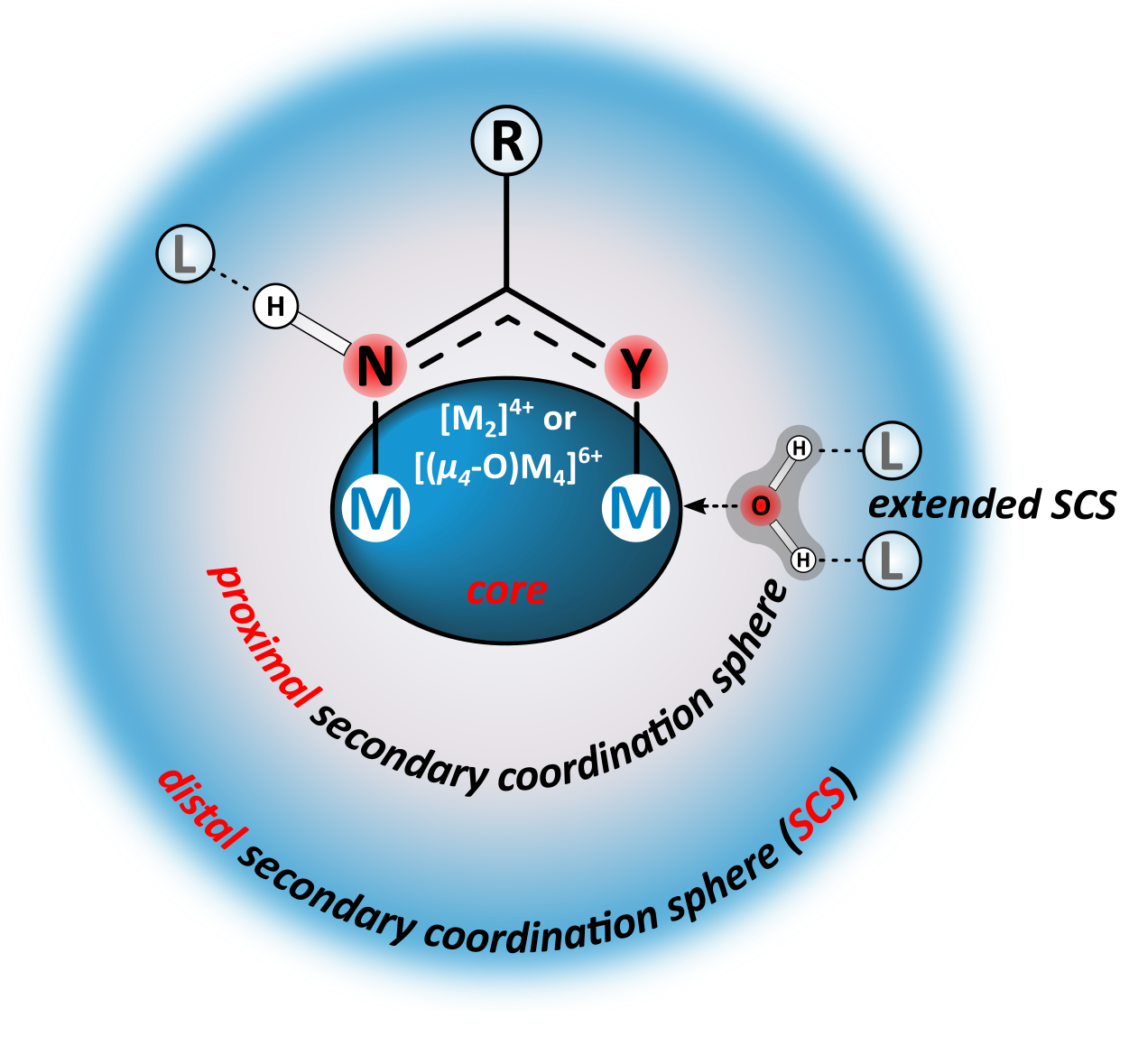
National Science Centre’s OPUS21 project No. 2021/41/B/ST4/04414
Assembly-by-Design: Polyhedral metal complexes as molecular building blocks of functional supramolecular assemblies (FunSup)
Project leader: Prof. Janusz Lewiński
Project duration: 2022 – 2025
Project value: PLN 1 729 400 (ca. EUR 0.4 million)
PROJECT DESCRIPTION EXECUTORS PAPERS RECRUITMENT
Project description
The development of highly complex chemical systems, self-assembled by the donor-acceptor and/or noncovalent interactions, lays at the core of supramolecular chemistry. Continuously growing demand for innovative solutions stimulates the chemistry world, i.e., to design and develop new molecular building units or to perform rational syntheses of materials with desired functionalities. For the past decades, we have been gaining from the development of multiple supramolecular inorganic and organic systems. This legacy provides us with an understanding of relationships between molecular structures, their reactivities and physicochemical properties. However, it is believed that an upcoming breakthrough will be achieved by (i) rational design and synthesis of new molecular metal complexes as potential molecular building units, (ii) finding the correlations between structure, bonding interactions and reactivity of chemical species incorporated in the desired materials, as well as their final macroscopic properties, or (iii) the rational employment of molecular entities into desired hybrid inorganic-organic materials.
Based on our long-term experience and achievements in the fields of inorganic and organometallic chemistry, the overall goal of the following project is to tackle all the mentioned challenges, which will advance the basic science of supramolecular chemistry and materials science. Multinuclear metal complexes with proper geometric requirements can act as linkers and secondary building units (SBUs) of a vast range of metal-organic frameworks (MOFs). They can also form diverse noncovalent supramolecular networks ranging from structures representing zeolitic topologies to soft porous materials. Strikingly, the oxo-zinc carboxylate unit is a prototypical node of IRMOFs SBU. Moreover, both oxo-metal tetranuclear and the paddle-wheel-type dinuclear units are the most common SBU motifs in MOFs. Thus, a more in-depth understanding of the reactivity of molecular complexes featuring mentioned above units towards small inorganic and organic molecules is particularly crucial for the design and post-synthetic modifications of MOFs. Strikingly, molecular metal complexes based on the oxo-metal tetranuclear and the paddle-wheel-type dinuclear cores have been exploited to a significantly lesser extend as molecular building units of noncovalent porous materials (NPMs). Achieving control over secondary sphere geometries and self-assembly processes of metal complexes as molecular building units remains an ongoing challenge. In this view, the character of the metal centres, as well as the composition of the organic ligand backbone in the proximal and distal secondary coordination sphere (SCS), can play a crucial role providing control over weak noncovalent interactions, which govern the packing of molecules in the crystals. Moreover, the supramolecular structure of molecular crystals can easily be tailored by subtle modifications of the organic skeleton or co-crystallization of various molecular building blocks. This allows to tune the multiple functionalities of designed solid-state materials. Clearly, a comprehensive understanding of the intermolecular interactions is thus essential for the design of new building blocks and, ultimately, supramolecular networks.
This interdisciplinary project combines various aspects of fundamental coordination and supramolecular chemistry, and the proposed systematic studies on the role of the primary and the proximal and distal coordination sphere is a highly innovative approach.

Executors
Maciej Jacyna, PhD student
Kornel Sacharczuk, PhD student
Dominik Jabłoński, PhD student
Papers
- P. Krupiński,* M. Terlecki,* A. Kornowicz, I. Justyniak, D. Prochowicz, J. van Leusen, P. Kögerler, J. Lewiński
Tetrahedral M4(μ4-O) motifs beyond Zn: Efficient one-pot synthesis of oxido-amidate clusters via a transmetalation/hydrolysis approach
Inorganic Chemistry, 2022, 61, 7869–7877. WWW Cover! - K.Korona, M. Terlecki, I. Justyniak, M. Magott, J. Żukrowski, A. Kornowicz, D. Pinkowicz, A. Kubas, J. Lewiński
A new look at molecular and electronic structure of homoleptic diiron(II,II) complexes with N,N-bidentate ligands: Combined experimental and theoretical study
Chemistry – A European Journal, 2022, 28, e202200620. WWW
Recruitment
Currently, there are no open positions in the project.
Deadline for submissions in the recent call was: 13 March 2023.
